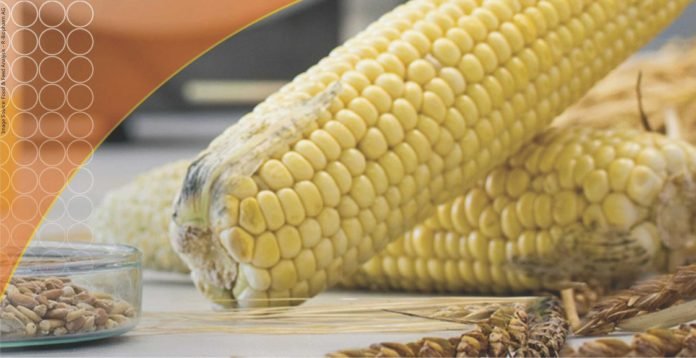 The negative impact of mycotoxins on the agricultural economy and human health is very well known to the global community. The fact that there is an exclusive annual or biannual conference(WMF- World Mycotxin Forum)) on mycotoxinsto discuss various aspects of their impact and management,this also emphasizes the importance of holding such conferences. This year such conference was held at Parma, Italy between 16th and 18th of May, being the first such conference post-covid. The conference being relevant to all those who work on mycotoxin space – researchers, food and feed industry, laboratories, policy makers, and enforcement agencies from around the world. I was fortunate to be there along with my colleagues to witness new research and deliberations leading to better management of mycotoxins in the food chain. This article briefly describes some of the key learnings.
The negative impact of mycotoxins on the agricultural economy and human health is very well known to the global community. The fact that there is an exclusive annual or biannual conference(WMF- World Mycotxin Forum)) on mycotoxinsto discuss various aspects of their impact and management,this also emphasizes the importance of holding such conferences. This year such conference was held at Parma, Italy between 16th and 18th of May, being the first such conference post-covid. The conference being relevant to all those who work on mycotoxin space – researchers, food and feed industry, laboratories, policy makers, and enforcement agencies from around the world. I was fortunate to be there along with my colleagues to witness new research and deliberations leading to better management of mycotoxins in the food chain. This article briefly describes some of the key learnings.
Day 1:
Proceedings of the Plenary session.
The first speaker,Joseph Strauss from Department of Applied Genetics and Cell Biology, BOKU, Austria, gave a glimpse of why fungus produce mycotoxins in specific stress conditions. Mycotoxin production from the fungus is an economically costly process and the production happens to assist fungus to protect them the invasion of bacteria and other fungus. Scientists are now trying to understand various complex signaling networks that are involved mycotoxin synthesis which can potentially help in lowering harmful mycotoxin production.
The next speaker Cornelia Boesch described the nexus between food safety and food security as related to mycotoxin contamination. Given that a constant concern about hunger and malnutrition has been a major barrier in addressing the issue of mycotoxins, the effective mycotoxin management strategies should keep in mind both food safety and security.
Other topics such as the impact of climate change on mycotoxin production, finding the balance between safety and sustainability in a circular food system and advancing the circular bio-nutrient economy to combat mycotoxins were also discussed in the Plenary session.
Although there has been a lot of talk on the use of plant-based meat alternatives, a short presentation by Octavian highlighted the increased risk of human mycotoxin exposure when such alternatives are consumed.
Day 2:
The morning session addressed two simultaneous topics: Animal Health and Productivity and Exposure Assessment and Human Health.The afternoon session addressed other two simultaneous topics: Mitigating mycotoxin risks and Update on EFSA activities in mycotoxin risk assessment.
Animal Health and Productivity:
The session started with a nice overview of the impact of mycotoxins on poultry health by Prof. Antonissen from Ghent University.
This was followed by the introduction of new type A trichothecene, NX, and its impact on intestinal toxicity. This novel toxin is produced by Fusarium graminearum and structurally very similar to DON, only differing by the keto group at C8. Because of their structural similarity as well as their potential co-occurrence in food and feed, Prof. Isebella Oswald’s group evaluated the combined effects on intestinal toxicity and the data revealed that DON and NX both target the intestine.
Histological and transcriptomic analysis indicated a greater effect of NX as compared to DON. Analysis of the extracellular proteome revealed an increased leakage/secretion of mitochondrial proteins by NX, which may be a feature of the toxicity of this new toxin. This study further emphasized how little we know about the total mycotoxin toxicity a contaminated feed or food can impose on animal or human health. Mycotoxin interaction is a norm today and not an exception.
Johanna F Lindahl from Kenya spoke about Aflatoxins in Kenya: A story of maize, milk, and money. The proportion of maize, the primary staple food in Kenya, testing over the regulatory limit ranges between 7.5% and 83%, depending on the year, with average level of contamination as high as double the allowed level. On top of this, aflatoxin M1 survey in milk and milk products shows up to 100% contamination in low-income market. Aflatoxin management programmes must show benefits to the farmers. As premium prices for aflatoxin-safe products are generally absent in this market, other levers for behavior change, such as ease of post-harvest crop processing and increased milk volumes, can be used.
My presentation in this session focused on “Why one-size-fits-all don’t work in the mycotoxin risk management”. Based on the type of mycotoxin in the feed and the animal species in question, dietary mycotoxin mitigation strategy should change. It is well known that all mycotoxins cannot be bound and therefore, other mitigation strategies such as immune modulation and gut health management should be given importance. Such broader approach can help to manage unexpected toxicity of emerging and masked mycotoxins.
Managing mycotoxin risks:
Dr. Njobeh from University of Johannesburg, South Africa discussed about the application of fermentation processes for mycotoxin reduction in food. Two mode of actions are possible here; 1. Mycotoxin adsorption to the cell wall of microorganisms such as lactic acid bacteria and yeast. 2. Biodegradation of mycotoxins by enzymes of these microbes to potentially less toxic or non-toxic metabolites.
Jansen Cherewky, a PhD student from University of Saskatchewan, Canada discussed the relevance of old technology, ammoniation, to detoxify ergot alkaloids. Ammoniation alters the R and S-epimers of ergot alkaloids, which may lead to a potential practical detoxification process of ergot-contaminated feed.
Virginia Marquis from Phileo by Lesaffre discussed the role of selected yeast fractions in reducing the negative effects of DON. The results suggested that the immune-modulating yeast fraction effectively relieved DON-induced inflammation in IPEC-J2, intestinal swine explants and intestinal broiler tissue, as well as improved intestinal barrier function and reduced liver lesions in broilers.
Kelly Niermans from Wageningen University and Research, The Netherlands, presented another interesting mycotoxin mitigation strategy. M. domestica house flies were fed on very high mycotoxin-contaminated diets and then the mycotoxin residues in the insect body were evaluated. The absence of mycotoxin accumulation indicates the possible safe use of M. domestica larvae as food- and/or feed when reared on mycotoxin contaminated residual streams. This way we can reduce the wastage of mycotoxin-contaminated raw materials and assist strengthening circular economy and mycotoxin remediation.
Young Scientist Forum:
Sustainable agricultural production is the responsibility of all the organizations. Nutreco considers sustainability as one of the major pillarsin animal production. We believe that the current generation young minds always come up with out of the box and innovative ideas. They understand the challenges and the expectations of the ever-evolving consumers. At first their ideas may look impractical but if we deep dive, we can always get better ideas for further research. This is why for the first time ever, WMF in collaboration with Trouw Nutrition conducted Young Scientist Forum where the young scientists and students interacted with academic and industry leaders to learn not only about mycotoxins but also how to manage their career in animal industry. More than 50 students and young scientists attended the forum.
Day 3:
On the last day of the conference, there was an ample opportunity to networking and poster viewing. Plenary session was held to advice the audience of the next steps in efficient mycotoxin risk management. Best poster award was presented and the five key learnings, as experienced by the Chairmen of the forum, were discussed. Overall, it was an enjoyable event with lots of learnings and catching up with old friends from the academics and the industry.
by Dr. Swamy Haladi, Trouw Nutrition









